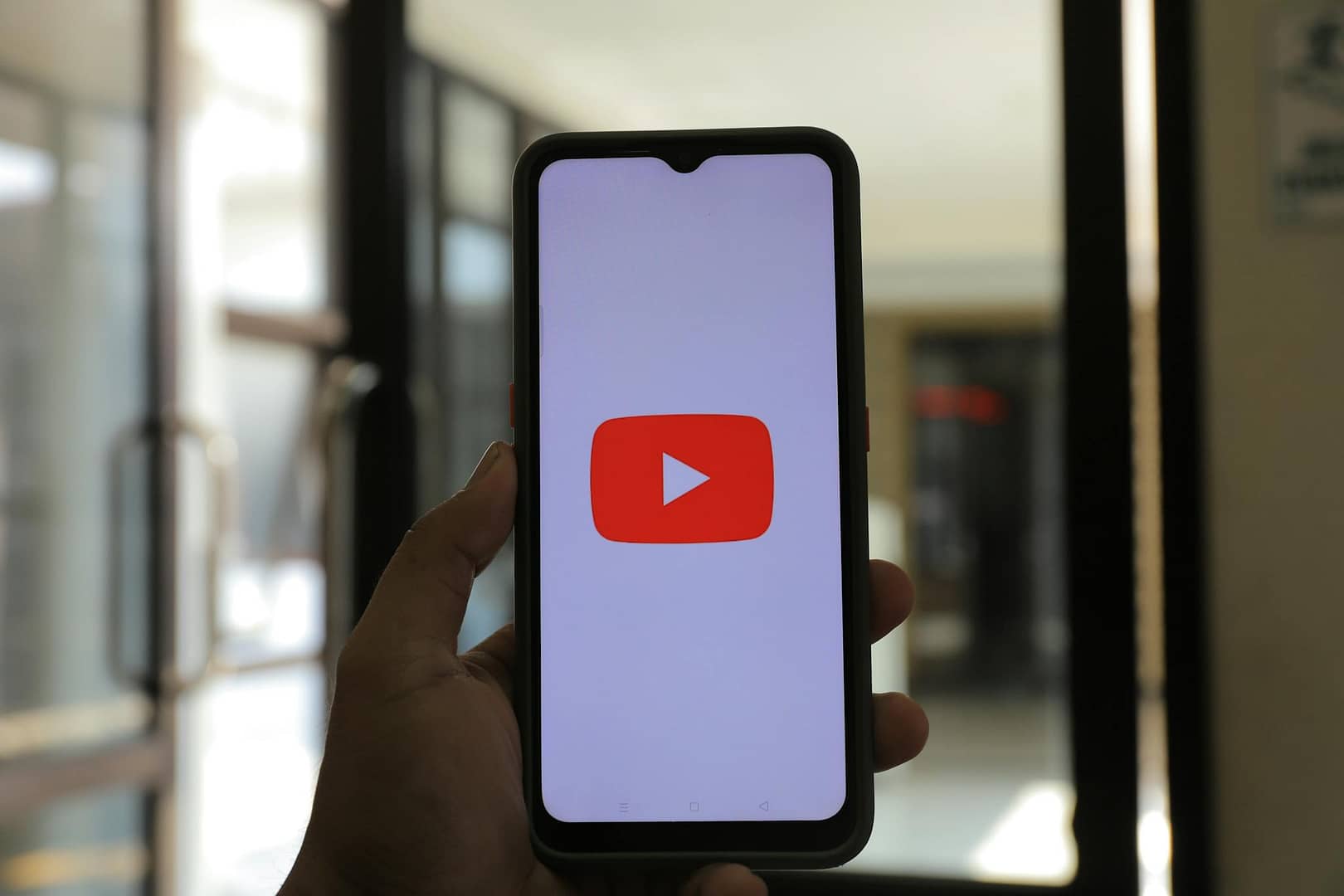Having a successful blog is no small feat, but with the right content strategy for your blog, you can create a thriving online space that keeps readers coming back for more. In this article, we’ll share seven useful tips to help you craft an efficient content strategy for your blog, leveraging email marketing, social media marketing, and video marketing. Let’s dive in!
Define your niche and target audience: Before anything else, it’s crucial to pinpoint your blog niche and target audience. By focusing on a specific niche, you can cater to the needs and interests of your audience more effectively. Consider your passions, industry experience, and the competitive landscape when choosing a suitable niche.
Set clear goals for your blog: To ensure your content strategy is effective, it’s essential to establish clear goals. Are you looking to drive traffic, increase engagement, or grow your email list? By defining your objectives, you can measure the performance of your content and adjust your strategy accordingly.
Conduct keyword research: Keywords play a vital role in driving relevant traffic to your blog. Conduct thorough keyword research to identify the right keywords that can improve your search engine rankings and attract your target audience. Use SEO tools and analyze competitors’ strategies to find promising keywords for your niche.
Create valuable, audience-centric content: Your content strategy should revolve around the needs and interests of your audience. By providing valuable, engaging, and relevant content, you’ll keep readers hooked and foster a loyal following. Consider incorporating different content formats such as email marketing, social media marketing, and video marketing to reach a broader audience.
Optimize your content for SEO: Don’t forget the importance of SEO in driving organic traffic to your blog. Make sure your content is optimized for search engines, including proper keyword usage, meta descriptions, and heading tags. Keep up-to-date with search engine algorithms and adjust your SEO strategy accordingly.
Analyze your competitors: Keep an eye on your competitors and learn from their successes and mistakes. By conducting a competitor analysis, you can identify promising strategies to adopt and pitfalls to avoid. Use this knowledge to your advantage and differentiate your blog from industry giants.
Continuously improve your website: Your website’s performance plays a crucial role in the user experience. Regularly assess and improve aspects such as website speed, navigation, and design. A well-optimized website will help retain readers and drive more traffic to your blog.
By implementing these seven tips, you’ll be well on your way to creating an efficient content strategy for your blog. Remember, the key to success is consistency and dedication. Keep refining your strategy, and you’ll soon reap the rewards of your hard work. Happy blogging! Now let’s take a close look at each of these steps.

Defining Your Niche and Target Audience: A Closer Look
So, you’ve decided to start a blog, and now you’re wondering, “How do I choose the right niche and target audience?” Well, you’re in the right place! Defining your niche and target audience is like laying the foundation for your blogging empire. Let’s dive deeper into the process and figure out how to identify the perfect niche and audience for your blog.
First things first, what is a niche? Think of your niche as your blog’s main theme or focus. It’s like choosing a major in college; you want to pick something you’re passionate about, but also something that will attract readers and keep them engaged. A well-defined niche allows you to establish yourself as an expert in that area, making it easier to build trust with your audience.
When selecting your niche, consider the following:
Passion: Ask yourself, “What topics am I passionate about? What do I enjoy discussing or learning about?” Remember, you’ll be creating content around this topic regularly, so it’s important to choose something you genuinely enjoy.
Knowledge: Assess your expertise in your chosen niche. Are you already an expert in this area, or are you willing to invest time and effort to become one? Your knowledge and experience will be invaluable when creating content that resonates with your audience.
Demand: Determine if there’s a demand for content in your chosen niche. Is there an audience interested in this topic? Use tools like Google Trends or keyword research tools to gauge the level of interest in your niche.
Competition: Analyze your competition to see if there’s room for your blog in the market. A highly competitive niche might be challenging to break into, but don’t be discouraged! With dedication and creativity, you can carve out your unique space in any niche.
Once you’ve chosen your niche, it’s time to define your target audience. Your target audience is a specific group of people who share common interests, needs, or problems related to your niche. Knowing your target audience allows you to create content that appeals to their unique needs and preferences.
To define your target audience, consider these questions:
Demographics: What is the age, gender, and location of your ideal reader? These factors can impact the type of content you create and the tone you use in your writing.
Interests: What are your target audience’s hobbies, preferences, and passions? Understanding these interests can help you craft content that resonates with your readers.
Pain points: What challenges or problems does your target audience face in relation to your niche? By addressing these pain points, you can provide valuable solutions and build trust with your readers.
Content consumption habits: How does your target audience prefer to consume content? Are they more likely to engage with blog posts, videos, or social media updates? This information can help you tailor your content strategy accordingly.
In a nutshell, defining your niche and target audience is a crucial step in creating an efficient content strategy for your blog. By understanding your audience’s needs and preferences, you can craft content that truly connects with them, setting your blog up for long-term success. So, what are you waiting for? It’s time to find your niche and get to know your target audience!

Setting Clear Goals for Your Blog: A Pathway to Success
Picture this: you’re about to embark on a road trip, but you have no destination in mind. You’d probably end up driving aimlessly, wasting time and resources. The same principle applies to your blog! Without clear goals, it’s challenging to know where you’re headed and whether you’re making progress. So let’s explore the importance of setting clear goals for your blog and how to get started.
Why are clear goals essential? Well, they serve as a roadmap, guiding your content strategy and helping you make data-driven decisions. Moreover, goals help you measure your blog’s performance, enabling you to identify areas for improvement and celebrate your wins.
When setting goals for your blog, consider the following tips:
Be specific: General goals like “I want to grow my blog” are difficult to measure and achieve. Instead, create specific goals like “I want to increase my blog traffic by 30% in the next six months.” This level of specificity makes it easier to track your progress and stay motivated.
Make your goals measurable: Ensure your goals are quantifiable so that you can track your progress over time. For example, “I want to grow my email list to 5,000 subscribers in the next year” is a measurable goal that can be tracked using various analytics tools.
Set realistic expectations: While it’s essential to aim high, it’s also crucial to be realistic. Setting unattainable goals can lead to frustration and burnout. Assess your current resources and capabilities, and set goals that are ambitious yet achievable.
Establish a timeline: Assign a deadline to each goal to help maintain focus and prioritize your efforts. Having a sense of urgency encourages you to stay on track and work consistently towards your objectives.
Consider different aspects of your blog: Your blog is a multifaceted platform, and you should set goals for various aspects, such as content creation, audience growth, engagement, and monetization. By setting goals in different areas, you can create a more comprehensive and efficient content strategy.
So, what might some blog goals look like? Here are a few examples:
- Increase organic traffic by 25% in the next six months through SEO optimization and keyword targeting.
- Publish two high-quality blog posts per week to boost audience engagement and attract new readers.
- Collaborate with three influencers in your niche within the next quarter to expand your reach and credibility.
- Increase email subscribers by 50% in the next year by offering a valuable lead magnet and promoting it through social media.
Remember, the key to achieving your goals is consistency and perseverance. Monitor your progress regularly, adjusting your strategy as needed, and don’t forget to celebrate your successes along the way! With clear goals and a focused approach, you’ll be well on your way to creating an efficient content strategy for your blog. So go ahead and map out your goals – your blogging journey awaits!

Keyword Research: The Secret Sauce to Attracting Your Ideal Readers
Imagine you’re throwing a party, and you want to make sure your guests have a fantastic time. You’d probably go out of your way to find the perfect playlist, right? Similarly, when it comes to your blog, keyword research is like finding the right tunes to get your audience dancing. It’s all about understanding what your readers are searching for and creating content that caters to their needs. So let’s dive into the exciting world of keyword research and learn how to make your blog the life of the party!
First things first, what exactly are keywords? In a nutshell, keywords are the words or phrases that people type into search engines when looking for information. By strategically targeting these keywords in your content, you can attract relevant traffic to your blog and boost your search engine rankings.
Here’s a step-by-step guide to conducting keyword research for your blog:
Brainstorm topics: Start by jotting down topics related to your niche. Think about the questions your target audience might have, the problems they face, and the interests they share. This will help you generate a list of potential keywords to explore further.
Use keyword research tools: Equip yourself with some handy keyword research tools like Google Keyword Planner, Ubersuggest, or Ahrefs. These tools can provide you with valuable data on search volume, competition, and keyword difficulty. By analyzing this information, you can identify the most promising keywords to target in your content.
Analyze your competition: Don’t forget to scope out your competitors! Take a look at the top-ranking content for your target keywords and identify the strategies that make them successful. By learning from your competitors, you can refine your content strategy and gain a competitive edge.
Consider long-tail keywords: Long-tail keywords are longer, more specific phrases that tend to have lower search volume but higher conversion rates. By targeting long-tail keywords, you can attract a more targeted audience that’s more likely to engage with your content and convert.
Organize your keywords: Once you’ve identified a list of potential keywords, it’s time to organize them. Categorize your keywords based on topic, search intent, and difficulty. This will help you create a structured content plan and prioritize your efforts.
Monitor and refine: Remember, keyword research isn’t a one-time process. Keep an eye on your analytics to see how your content is performing, and adjust your keyword strategy as needed. As trends and user behavior evolve, so should your keyword research.
Think of keyword research as a treasure hunt. By following the clues and digging deep, you can uncover the most valuable keywords that will drive relevant traffic to your blog. It’s all about putting yourself in your audience’s shoes and creating content that answers their questions and meets their needs. So go ahead, roll up your sleeves and dive into the world of keyword research. Your readers are waiting!

Creating Valuable, Audience-Centric Content: The Recipe for a Winning Blog
You know that feeling when you stumble upon a blog that just gets you? It’s like finding a hidden gem – a place where you feel understood, and every article feels like it was written just for you. That’s the magic of audience-centric content, and it’s the secret sauce to making your blog shine. So let’s explore how to whip up some irresistible content that keeps your readers coming back for more!
Know your audience inside and out: The first step to creating audience-centric content is to know your audience like the back of your hand. Who are they? What are their pain points? What makes them tick? By understanding your audience, you can create content that speaks to their needs, desires, and challenges.
Keep it authentic: No one likes a show-off or a know-it-all, right? The same goes for your blog. Keep your tone authentic, relatable, and down-to-earth. Share your own experiences and insights, and don’t be afraid to show your personality. After all, people connect with people, not robots!
Solve problems: Ever had a problem you couldn’t solve, and then you found the perfect blog post with the answer? That’s the kind of content you want to create. Address your audience’s pain points and provide actionable solutions that help them overcome their challenges.
Educate and entertain: Remember the saying, “All work and no play makes Jack a dull boy”? Keep that in mind when crafting your content. While providing valuable information is crucial, don’t forget to sprinkle in some entertainment. Use storytelling, humor, and engaging examples to keep your readers hooked and make learning fun.
Make it visually appealing: A picture is worth a thousand words, and that’s especially true when it comes to blog content. Break up large blocks of text with relevant images, infographics, or videos to keep your readers engaged and make your content more digestible.
Engage with your readers: Encourage conversation by asking questions and inviting feedback. Respond to comments and engage with your readers on social media. By nurturing a sense of community, you can foster loyalty and turn casual readers into raving fans.
Keep it fresh: Stay up-to-date with the latest trends, news, and insights in your niche. Regularly update your content and experiment with new formats, styles, and topics to keep your blog fresh and engaging.
Creating valuable, audience-centric content is like cooking a delicious meal for your friends – it’s all about knowing their tastes, using the right ingredients, and adding a dash of your own unique flair. By following these tips, you can create content that resonates with your readers, keeps them engaged, and turns your blog into a go-to resource they can’t live without. So grab your apron, roll up your sleeves, and let’s get cooking!

Optimizing Your Content for SEO: The Roadmap to Ranking Success
Picture this: you’ve just crafted an amazing blog post, packed with valuable insights and engaging storytelling. But wait, there’s more to be done before hitting “publish” – you’ve got to make sure your content is SEO-friendly so it can climb the ranks and reach your target audience. Not sure where to start? Don’t worry, we’ve got you covered! Here’s your step-by-step guide to optimizing your content for SEO, so you can become the go-to guru in your niche.
Choose the right keywords: Think of keywords as the breadcrumbs that lead search engines (and your audience) straight to your content. Do some keyword research to find the most relevant and high-traffic terms for your topic. Don’t forget to consider long-tail keywords, which are longer, more specific phrases that can attract highly targeted traffic.
Craft an irresistible title: You know what they say: first impressions are everything. Your title is the first thing people will see, so make it count! Incorporate your target keyword and create a catchy, compelling title that makes readers want to click and explore further.
Write an engaging meta description: The meta description is like a movie trailer – it’s a sneak peek that entices people to check out the full feature. Keep it concise, use your target keyword, and make it enticing so readers will want to click through to your content.
Use headings and subheadings: Remember the last time you tried to read a wall of text? It’s not fun. Break up your content with headings and subheadings to make it more readable and user-friendly. Plus, search engines love well-structured content, so it’s a win-win!
Sprinkle keywords naturally: While it’s important to use your target keywords throughout your content, don’t go overboard. Nobody likes a keyword-stuffed article that reads like it was written for robots. Use your keywords naturally and in context to keep your content engaging and SEO-friendly.
Optimize your images: Images aren’t just for visual appeal – they can also boost your SEO game. Use descriptive file names and alt tags to help search engines understand what your images are about. And don’t forget to compress your images for faster loading times!
Add internal and external links: Linking to relevant, high-quality external sources not only adds value for your readers but also signals to search engines that your content is well-researched and trustworthy. Likewise, linking to your own related content helps search engines better understand the structure of your site and can improve your rankings.
Monitor your performance: Rome wasn’t built in a day, and neither is a successful SEO strategy. Regularly track and analyze your content’s performance to see what’s working, what’s not, and where you can improve. Tools like Google Analytics and Google Search Console can provide invaluable insights to help you refine your SEO game plan.
Optimizing your content for SEO may seem like a daunting task, but it’s crucial for driving traffic and ensuring your hard work gets the attention it deserves. By following these tips and tricks, you can make your content shine in the eyes of both search engines and your audience, so buckle up and get ready for the ride to the top of the rankings!

Analyzing Your Competitors: Discovering the Secret Sauce of Success
Ever wondered how your competitors are raking in traffic and ranking high in search results? Want to uncover the hidden strategies they’re using to dominate your niche? It’s time to put on your detective hat and dive into the world of competitor analysis! By examining what your competitors are doing right (and wrong), you can learn valuable lessons and identify opportunities to outshine them. So, grab your magnifying glass and let’s embark on a journey to uncover the secret sauce of success!
- Identify your main competitors: Before you can start analyzing, you need to know who you’re up against. Make a list of your top competitors – those who rank well for your target keywords, have a strong presence on social media, or are simply killing it in your niche.
- Examine their content: Time to do some reading! Dive into your competitors’ blogs and take note of the types of content they’re publishing. Are they creating in-depth guides, how-to articles, or thought leadership pieces? Look for patterns and trends, and consider how you can create even better content to stand out in your niche.
- Study their SEO tactics: How are your competitors optimizing their content for search engines? Check their titles, meta descriptions, headings, and keyword usage to see how they’re targeting relevant search terms. Use this information to refine your own SEO strategy and gain a competitive edge.
- Analyze their backlinks: Backlinks are like votes of confidence from other websites, and they’re a major factor in search engine rankings. Investigate who’s linking to your competitors, and try to earn links from the same sources. You can use tools like Ahrefs or Moz to help you analyze backlinks and find opportunities.
- Evaluate their social media presence: Social media is a powerful tool for driving traffic and building an engaged audience. Take a look at your competitors’ social media profiles and see how they’re using these platforms to promote their content. Are they using eye-catching visuals, engaging captions, or running contests to boost engagement? Learn from their tactics and adapt them to your own strategy.
- Check out their email marketing: If you can, subscribe to your competitors’ email newsletters to see how they’re nurturing their audience and promoting their content. Are they using personalized subject lines, captivating visuals, or valuable offers to keep their subscribers engaged? Use these insights to fine-tune your own email marketing strategy and make your content shine in your audience’s inbox.
- Learn from their successes and failures: The beauty of competitor analysis is that it allows you to learn from others’ experiences. As you study your competitors, take note of the strategies that seem to be working well for them, as well as those that may have fallen flat. Use this knowledge to inform your own content strategy and avoid making the same mistakes.
Remember, analyzing your competitors isn’t about copying their every move – it’s about learning from their successes and failures, and finding ways to differentiate yourself in the crowded landscape of your niche. By keeping a close eye on your competition, you can stay ahead of the game and create a content strategy that truly stands out. Happy sleuthing!

Continuously Improve Your Website: The Never-Ending Quest for Perfection
Picture this: You’ve got an amazing blog with top-notch content, but your website is clunky, slow, and difficult to navigate. What do you think will happen? Chances are, your readers will get frustrated and leave, never to return. That’s why it’s crucial to continuously improve your website, ensuring a seamless experience for your visitors. After all, your website is like your home on the internet – and who doesn’t want a beautiful, welcoming home? So, let’s explore the key areas you should focus on to make your website shine!
Speed it up: Did you know that a one-second delay in page load time can lead to a 7% loss in conversions? Ain’t nobody got time for slow websites! Optimize your images, enable caching, and minimize HTTP requests to ensure your pages load as quickly as possible. Remember, time is of the essence, especially in today’s fast-paced world
Enhance user experience (UX): Think about your website from your visitors’ perspective. Is it easy to navigate? Can they find what they’re looking for without any hiccups? Make sure your website is organized logically, with a clear menu, intuitive layout, and prominent search functionality. After all, happy users are more likely to stick around and explore your content.
Responsive design is a must: With more and more people browsing the web on mobile devices, it’s crucial to ensure your website looks great and functions seamlessly on all screen sizes. A responsive design will automatically adjust your website’s layout based on the user’s device, providing an optimal experience for everyone. Trust us, your mobile visitors will thank you!
Don’t forget about accessibility: Accessibility is about making your website usable for everyone, regardless of their abilities or disabilities. Use descriptive alt tags for images, ensure proper color contrast, and organize your content with headings and subheadings. By making your website more accessible, you’re not only helping people with disabilities but also improving the overall user experience for everyone.
Keep your design fresh and appealing: Just like fashion trends, web design trends are constantly changing. Stay up-to-date with the latest design trends and update your website’s look accordingly. A fresh, modern design will make your website more appealing and keep your visitors coming back for more.
Consistently test and analyze: The key to continuous improvement is, well, continuous! Regularly test your website’s performance, usability, and design, and analyze the results to identify areas that need improvement. Use tools like Google Analytics to monitor your website’s traffic, bounce rate, and user behavior, and make data-driven decisions to optimize your website.
Listen to feedback: Last but not least, don’t forget to listen to your users. They’re the ones using your website, after all! Encourage feedback through comments, surveys, or even direct communication with your audience. By incorporating their suggestions and addressing their concerns, you’ll create a website that truly meets the needs of your readers.
So there you have it – the never-ending quest for website perfection! By continuously improving your website, you’ll not only provide a better experience for your visitors but also boost your chances of achieving your blogging goals. Keep striving for excellence, and watch your website flourish!






